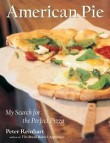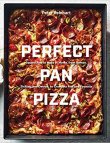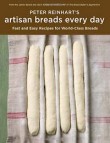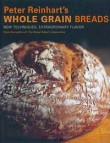Peter’s Blog, August 8th — Alright, Controversy!!
I’m packing and getting ready for the big book launch over the next two weeks in SF and the Bay Area, so will keep this short. The schedule is listed below in my previous Peter’s Blog, if any of you can make it to any of the classes or book signings. There are still a few seats left for the classes but you’ll have to call the venues for more info.
But this week I think we’re going to have to address the controversy that emerged in the Comments section of my last posting, thanks to someone named Scott007 and a few other voices, including another Scott — Scott123. It’s actually kind of exciting — apparently, I’ve pissed a few people off and am not sure why but would sure like to find out what I did (if you aren’t up to speed, please check out the Comments thread in the recent Peter’s Blog — last time I checked there were 14 comments). So, what I’d like to do is open up the discussion here on this posting, via a new Comments section, the one on this posting, and ask any and all of you to chime in. If I’ve trashed NY pizza culture, as Scott123 accuses, or passed on misinformation about pizza methodology or dough science, let’s get it all on the table so we can clear it up. Scott(s), how about getting specific and make your case — I hear that 123 is a well respected pizza authority so maybe I have something to learn from you. None of us have a monopoly on the whole truth and Pizza Quest was created to be a forum for the sharing of our mutual pizza journeys and celebration of artisanship. I’m open to learn from you but also would like to know the actual specifics of where you think I went wrong, rather than generalized attacks. The only rule for this discussion is civility — I reserve the right to edit out ad hominum attacks, unnecessary language, and nasty language. But differences of opinion — sure, I’m okay with that. So, for those who want to play along, go ahead and express yourselves — but let’s do it respectfully, please.
I won’t be posting another Peter’s Blog till I return at the end of the month, but will try to join in the Comments section from the road if my i-Pad and local WiFi will allow it. In the meantime, let’s get to the heart of it — we’re on a search for the truth (or, perhaps, truths). Let the discussion begin….
Recent Articles by Peter Reinhart
- Peter Scott Ruben: Why Frank Sinatra is the true “Chairman of the Board,” and the Greatest of the Greats
- Elizabeth Brasch, Mellow Mushroom’s Has a Vision
- Nipun Sharma: Pizza’s A-I Robotics Future is Now
- Maui Pizza with Chef Jeff Scheer of Restaurant Marlow
- The Pizza Yodi’s Are Back –John Arena and Brian Spangler are in the House!
- Arthur Bovino and Alfred Schulz and Their Pizza Pod Party
Add Comment
You must be logged in to post a comment.










And, just to up the ante even more, can I ask both Tony and Pappy if they have a go to recipe/formula that they’d like to share with out viewers for either pizza dough or classic lean (French) dough? If so, send them to me at my e-address and we’ll post them in the Instructional section instead of here in the Comments section. Based on each of your knowledge and passion, I’m guessing that you’ve arrived at some sort of go-to version or method. If so, it would be great to see which aspects of fermentation methodology you apply to get the desired results. Thanks for considering this — you can write to me at peter@pizzaquest.com
First, a little background. It is only by looking back at the history of pizza in my region that you can understand the depths of my passion and zealotry.
We begin our story with a world at war. After Allied forces invade Sicily and later the mainland, the ensuing occupation exposes these young men to Italian culture and food. When these GIs return home, they seek out these Italian foods, one of which was pizza. It’s not a coincidence that the first deck pizza oven dates back to 1945. Soldiers came home, demand for pizza increased and oven manufactures, seeing the opportunity, jumped into action. They beat their swords into plowshares- plowshares, that, rather than plant wheat, via American engineering brilliance, transformed wheat into righteousness.
Since these first deck ovens were competing with coal and wood ovens, it only makes sense that they had plenty of chutzpah. Carbon footprints? Carbon shmootprints. These were not the timid ovens of today. These fire breathing behemoths provided the traditional coal pizza bakers of that age an entirely new feature- consistency. And, of course, ease. They combined the superior high heat/fast bake times of coal with the reliability of gas. This was a quantum leap in pizzamaking, and from these ashes, the greatest food on the planet was born. It took a few decades to completely win over every heart, but, by the 70s, there was a pizzeria on just about every corner in NYC- and life couldn’t get any better.
The vintage NY slice was/is manna from heaven. No other food in the world has potentially wider appeal. Chicken Tikka Masala can charm the pants off of Britain and salsa can outsell ketchup here in the U.S., but pizza speaks to every culture. Even historically, dairy-adverse Asians are now beginning to see the light.
If you look at my mid 80s high school yearbook, under every picture, it will say ‘Favorite Food: Pizza.’ Every single graduate in a 500 student class. And this wasn’t just my high school. This was every high school in the NY area. This 1975-1995 slice was revered by young and old, of every ethnicity. This is the slice that defined the NY brand that hundreds of thousands of pizzerias across the nation and world attempt to emulate (and almost always fail). The archetype. It’s what at least 15 million New Yorkers (past and present) will picture in their minds when asked about pizza. It was (and is) the greatest food in the world from the greatest city in the world. Okay, okay, I’m a little biased (but not much).